#handloom weaver
Text
No widely popular songs hymned companionate and egalitarian marriages, but the radical Samuel Bamford wrote tender love poems to his wife and children.
How happy may we be, my love!
How happy may we be,
If we our humble means improve,
My wife, my child, and me.
Our home shall be a turtle's nest,
Where duty, peace, and love,
Shall make its inmates truly blest,
And sorrow far remove.
And if the world upon us frown,
Still peace serene is ours;
It cannot bear the free mind down,
With all its tyrant powers:
For if they bear me far away,
And bind me with a chain,
Our nestling will beside thee stay –
Then do not, love, complain.
As an active Chartist, handloom weaver and protester at the Peterloo demonstration, Bamford made it clear that the happy marriage depended upon the couple improving their 'humble means' and braving tyranny.
"Normal Women: 900 Years of Making History" - Philippa Gregory
#book quotes#normal women#philippa gregory#nonfiction#companionate#egalitarian#marriage#samuel bamford#love poem#poetry#happiness#duty#peace#love#serenity#chartism#chartist#handloom weaver#protestor#peterloo demonstration#happy marriage#improvement#humble means#tyranny
1 note
·
View note
Text
Exclusive Kanjivaram Bridal Silk Sarees - Make Your Wedding Special
Make your wedding unforgettable with our exclusive Kanjivaram bridal silk sarees. Discover a variety of designs and colors to suit your style.
#silk sarees online#wedding silk sarees#weaverswisdom#sigourney weaver#indian sarees#sareesonline#shoponline#women clothing#grailed#trends#online sarees#sareestyle#sareeswag#musthave#pure silk sarees#handloomsaree#pure handloom silk saree#handloom khadi fabric#handloomheritage
0 notes
Text


Seek out the extraordinary with Geographical Indication (GI) products! These are more than just everyday items
#GeographicalIndication#GI Product#GI tagged#handmade#handloom#handicraft#empower creator#artisans#weavers#farmers#manufacturers
0 notes
Text
Block Print Handloom Bedsheets
Introducing Chotanagpur Handloom Block Print Bedsheets – Artistry Meets Comfort!
Elevate your bedroom decor with our exquisite Chotanagpur Handloom & Khadi Block Print Bedsheets. These masterpieces are a fusion of traditional craftsmanship and modern aesthetics. Here’s what makes them exceptional. Enhance the beauty of your bedroom with Chotanagpur Handloom & Khadi Block Print Bedsheets – a blend of heritage and comfort. Experience the essence of Chotanagpur’s artistry in your home today!
Vivid Block Prints: The intricate block prints are a visual delight, They add a touch of tradition and elegance to your living space.
Premium Quality Fabric: We use the finest quality cotton yarns to ensure these bedsheets are not just beautiful but also soft and comfortable. They are perfect for a cozy night’s sleep.
Variety of Designs and Colors: Our collection offers a wide range of designs and color palettes, allowing you to choose the perfect bedsheet to complement your interior decor.
Easy Care: These bedsheets are easy to maintain. They are machine washable and designed to withstand regular use, so you can enjoy their beauty for years to come.
1 note
·
View note
Text
The Revival of Shantipur Textiles and Indian Saree Connected Historically with Bengal Renaissance
With Smt Moonmoon Sen, Eminent Actress, Philanthropist, Humanitarian who inaugurated the program on National Handloom Day
Indian Saree
With Yukiko Yuasa from Tokyo who was part of fashion show
With Smt Ruby Palchoudhuri, the chief architect of the revival of Shantipur Textiles
The Fashion Walk
The Models who walked the ramp
The Bengal Renaissance and the SareeGyanadanandini Devi Tagore’s…

View On WordPress
#advertising#beauty#birlaacademyofartandculture#choreography#communications#craftscouncilofwestbengal#fashion handloom sari bengal nadia shantipur textiles fashion trend actress moonmoonsen japan fashionschool alokesingh reviva#handloom#interview#moonmoonsen#nationalhandloomday#ramp#saree#shantipur#textiles#weavers#actress#Art#Bengal#Consciousness#Divine Mother#fashion#Japan
0 notes
Text

National Handloom Day aims to raise awareness about the significance of the handloom sector. It is celebrated on August 7 to honor the Swadeshi Movement's launch in Calcutta on the same day in 1905.
#OpenNaukri#NationalHandloomDay#HandloomDay#Handloom#Weaves#Weaver#heritage#handmade#generalknowledge#gk#history#dailygk
1 note
·
View note
Text





#weavers#artisans#northeast india#northeast#handloom#stoles#assam#handicrafts#crochet#yarn#knitting#yarn crafts#arts and crafts#crocheting
1 note
·
View note
Text
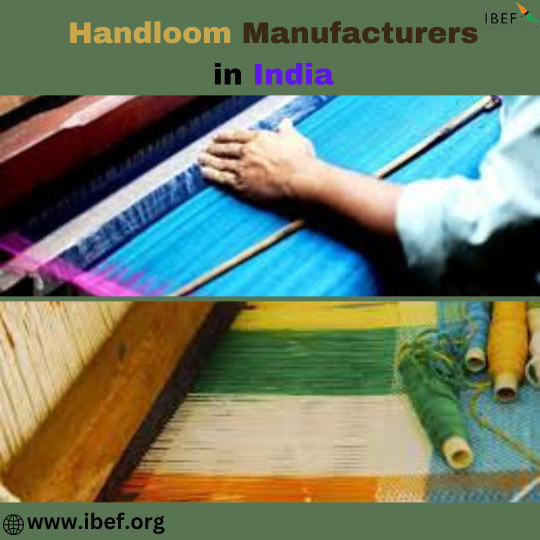
Handloom Manufacturers in India - IBEF
Handloom products are a testament to India's rich cultural heritage and skilled craftsmanship. Handloom manufacturers in India use traditional techniques to create unique textiles, ranging from sarees and stoles to home furnishings and accessories. These products are eco-friendly, and sustainable, and promote fair trade practices. The handloom industry provides livelihoods to millions of skilled weavers across India, and their artistry has been passed down through generations. By supporting handloom manufacturers, consumers can preserve India's cultural heritage and promote ethical and sustainable fashion.
#handloom clothes#handloom products#handloom weavers in india#indian handloom#handloom manufacturers in India#handloom export promotion
1 note
·
View note
Text

This blog is an ode to the traditional handlooms of Karnataka that have captivated saree connoisseurs.
0 notes
Photo

SILK PATOLA SILK DOUBLE IKAT NAVARATNA BHAT CREAM SAREE . . . This beautiful collection of silk Patola Silk Double Ikat Navaratna Bhat Cream Saree is a symbol of patience, imagination, and dexterity. The finesse of the pastel cream overlay is depicting traditional Navratna Motifs in hues of red-yellow-white-green-pink, offset in the red simple border with stripes running along the length of the saree. The red pallu features parrot-elephant ikat motif triple series and a kaddi band curates the interests of carefully crafted tradition. The saree does not come with a blouse . . . . . . #weaving #handmade #weaversofinstagram #handwoven #fiberart #art #handloom #weavingloom #woven #yarn #loom #textiles #textileart #weaver #wool #weave #handweaving #fiberartist #loomweaving #weavingart #saree #tapestry #wallhanging #textile #homedecor #design #weaverfever #fashion #wovenwallhanging #craft (at London, United Kingdom) https://www.instagram.com/p/CknCYg6yZD-/?igshid=NGJjMDIxMWI=
#weaving#handmade#weaversofinstagram#handwoven#fiberart#art#handloom#weavingloom#woven#yarn#loom#textiles#textileart#weaver#wool#weave#handweaving#fiberartist#loomweaving#weavingart#saree#tapestry#wallhanging#textile#homedecor#design#weaverfever#fashion#wovenwallhanging#craft
0 notes
Text
A parliamentary committee set up to explore the wage gap in 1840 heard from a handloom weaver from Stockport:
Joseph Sherwin . . . usually earned 6s 6d a week, and his wife 3s by winding bobbins for two other looms. However, he failed to subtract from his wage, and add to hers, the value of her winding services for his loom. Mrs Sherwin received for winding 3d out of every 1s earned by each of the two weavers who hired her services; each of these weavers, then, earned only 9d for every 1s worth of cloth. Since she could wind for three looms (her husband's plus two others), Mrs Sherwin could earn the same amount as these two weavers (9d = 3 x 3d). Joseph Sherwin admitted 'I must pay three-pence out of every shilling, if I had no wife.'
His true wage, then, was only 4s 10d, and his wife's true wage was 4s 7½d. What by his statement appeared to be a wage ratio of 0.46 (3s / 6s 6d) turns out to be, in truth, almost equal wages. If the wage data that we have overstate male earnings and understate female earnings, then there may be no wage gap to explain.
"Normal Women: 900 Years of Making History" - Philippa Gregory
#book quotes#normal women#philippa gregory#nonfiction#parliamentary committee#wage gap#gender pay gap#40s#1840s#19th century#handloom#weaver#weaving#bobbins#loom
4 notes
·
View notes
Photo
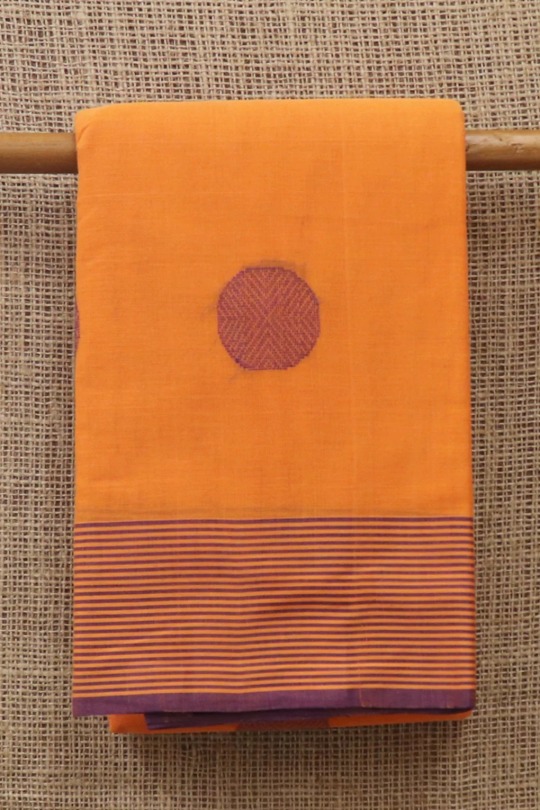
Pure Kanchi Cotton Sarees | Tamil Cotton Sarees | Handloom Cotton Sarees - Sundari Silks
Yellow Kanchi Cotton Saree with rudraksh butta and stripes border. This saree comes with blouse and lavender pallu.
Shop from: www.sundarisilks.com/collections/kanchi-cotton
Visit our website: www.sundarisilks.com/
#sundarisilks#kanchi cotton sarees#tamil cottton sarees#pure kanchi cotton sarees#pure handloom kanchi cotton saree#latest kanchi cotton sarees#cotton kanchipuram saree#kanchi cotton sarees online#kanchi cotton sarees with price#kanchi cotton sarees online shopping#kanchi cotton fabric#kanchi cotton sarees weavers#kanchi cotton sarees in chennai#kanchipuram cotton sarees online shopping
0 notes
Text
Kente comes from the word kenten, which means "basket" in the Asante dialect of the Akan language, referencing its basket-like pattern. In Ghana, the Akan ethnic group also refers to kente as nwentoma, meaning "woven cloth". Ashanti folklore includes a story where weavers invented kente by seeking to replicate the patterns of Anansi the spider.
West African cultures have been weaving textiles for thousands of years. Archaeological evidence for the oldest form of handloom weaving in Southern Ghana has been discovered at Begho and Bono Manso. Spindle whorls and dye holes discovered in these sites have been dated to the 14th–18th centuries. At Wenchi, spindle whorls have been dated to the 16th–17th centuries.

Asante oral tradition give the origins of Kente to an individual from Bonwire who introduced a loom among the Asante from Gyaman during the reign of Nana Oti Akenten in the 17th century. Another oral source states that it was developed indigenously by individuals from Bonwire during the reign of Osei Kofi Tutu I, who were inspired by the web designs of a spider. In the 18th century, Asantehene Opoku Ware I was documented by Danish agents Nog and L.F. Rømer, to have encouraged expansion in craft work. The Asantehene set up a factory during his reign to innovate weaving in the Ashanti Empire. This was the early stages of Kente production. The Danish agents described the operations of the factory as;
Some of his subjects were able to spin cotton, and they wove bands of it, three fingers wide. When twelve long strips were sewn together it became a “Pantjes” or sash. One strip might be white, the other one blue or sometimes the was a red among them...[Asantehene] Opoke [Ware] bought silk taffeta and materials of all colours. The artists unravelled them.

— Nog.
#african#afrakan#kemetic dreams#africans#brownskin#brown skin#afrakans#african culture#afrakan spirituality#kente#kente cloth#epic video#ashanti#Ghana
72 notes
·
View notes
Text
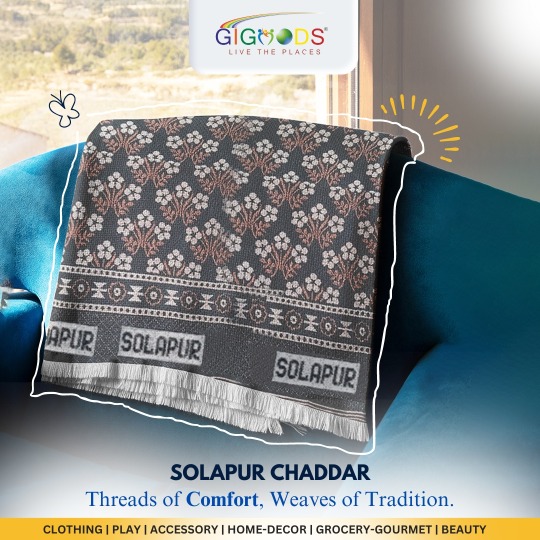
Drape your bed in the rich tradition of Solapur and Immerse yourself in the luxurious comfort of Solapur Chaddar.
#Geographical Indication#solapurChaddar#GI TAG#handmade#handloom#handicraft#empower weaver#artisans#weavers#farmers#manufacturers
0 notes
Text
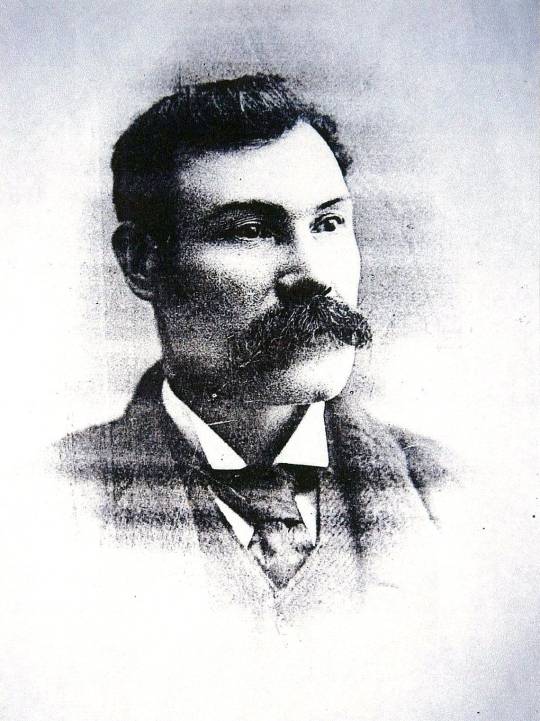

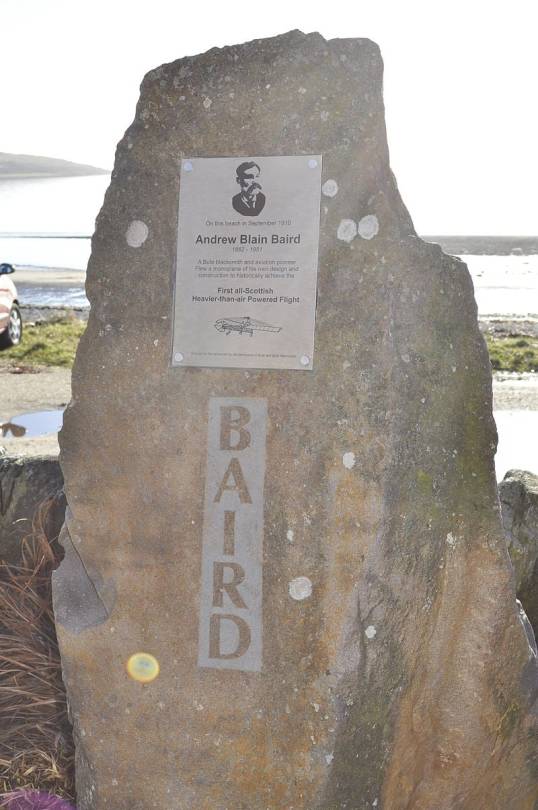
On 17th September 1910 Andrew Blain Baird, working as a blacksmith in Rothesay, made the first flight by an entirely Scottish designed and built aeroplane.
Andrew Blain Baird was born in 1862 in Sandhead on Luce Bay in the Rhinns of Galloway, Scotland. One of three sons, his father was a fisherman and handloom weaver. He became an apprentice to a blacksmith in Sandhead, worked as a lighthouse keeper on Lismore, then as an ironworker at Smith and McLean’s on the Clyde shipyards before finally setting up on his own as a blacksmith at 113 High Street in Rothesay, Isle of Bute, when he was 25.
Baird was a daring thinker, a pioneer and innovator. He created many improvements to the plough, built a unique model of the triple expansion engine powered by electricity and was one of the original members of the Scottish Aeronautical Society.
Eager to expand his knowledge of aviation, Baird corresponded with the early aviators Louis Bleriot and S. F. Cody and exchanged information about construction of aircraft and their flight. Inspired by a visit to Blackpool for England’s first ever Aviation Week in October 1909, he returned to Rothesay ready to design and build his own sophistocated monoplane similar to Bleriot’s but with an engine built by the Alexander Brothers in Edinburgh that was 4-cylinder, air-cooled and with water-cooled valves. The control system he would design for his aircraft would be unlike anything that had been developed at the time. His wife sewed brown trussore silk for the wings.
The Baird monoplane, once completed in his own shop in the summer of 1910, went on show at an exhibition in the Esplanade Flower Garden at the front of Bute. and then to the amazement and excitement of all it was moved to the Bute Highland Games on 20 August 1910.
From there it was taken for storage and readying directly to a barn owned by Willie Dickie at his farm at Cranlasgvourity, Bute.
Scottish aviation history was about to be made when in the very early morning of 17 September 1910, the Baird Monoplane was taken by a Mr Scott on his horse-drawn wagon to Ettrick Bay - with its wide expanse of sand reminiscent of the Kitty Hawk N.C. site chosen by the Wright Brothers for their historic flight.
In the sunshine and amid the wide golden sands of Ettrick Bay the first entirely Scottish designed and built plane sat ready to make history.
Andrew Baird was, on that day, assisted by his friend Ned Striven who was an Electrical Engineer with the Burgh of Rothesay and who had assisted him with the engine and related design considerations.
There on the wide expanse of Ettrick Bay beach, Baird and Ned Striven started the engine. All was ready. Hearts raced with anticipation. A small crowd looked on in amazement. And the flight into history began.
Flight Magazine on 24 September 1910,[1] described it as follows:
“Mr Baird was seated in the machine and on the engine being started the plane travelled along the sands at good speed. Naturally, on clearing the ground, the swerving influence of the axle ceased and the influence of the steering wheel brought the machine sharply round to the right causing it to swoop to the ground. The contact was so sharp that the right wheel buckled and the right plane suffered some abrasion by scraping along the beach.”
Andrew Blain Baird had realised his dream - he had flown in an aircraft of his own design and construction.
His was the first entirely Scottish flight of a heavier than air powered craft.
Noted pioneer aircraft manufacturer Tommy Sopwith sailed his yacht into Rothesay Bay in 1910 to visit the Marquess and to attend the Highland Games and there viewed the on display Baird monoplane. Very impressed, he was given permission to incorporate some of Baird’s innovations into the aircraft he was designing and which would have such a great impact on the course of World War I. Over the years, many others from around the world involved in aviation consulted Andrew Baird and learned from his pioneering experience and innovative mind.
12 notes
·
View notes
Text

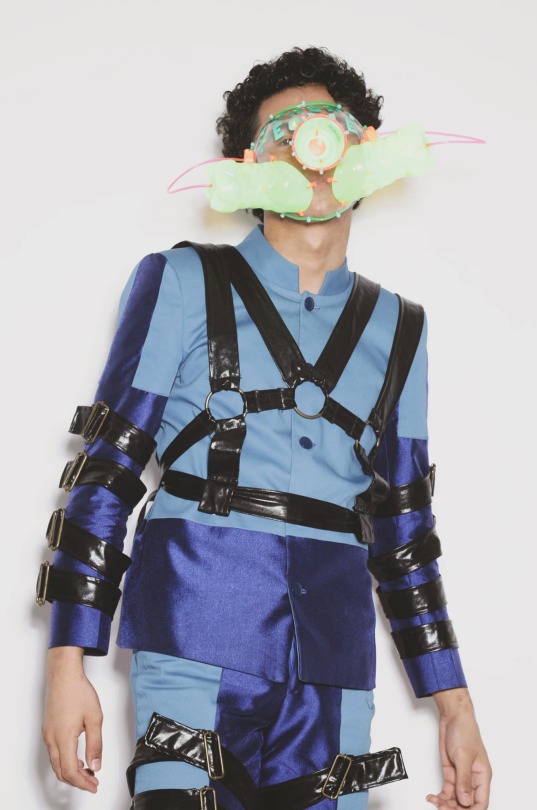
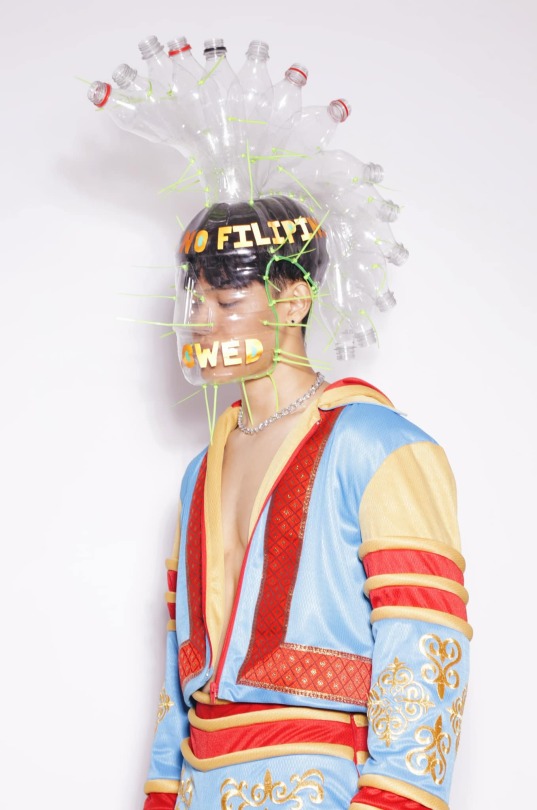


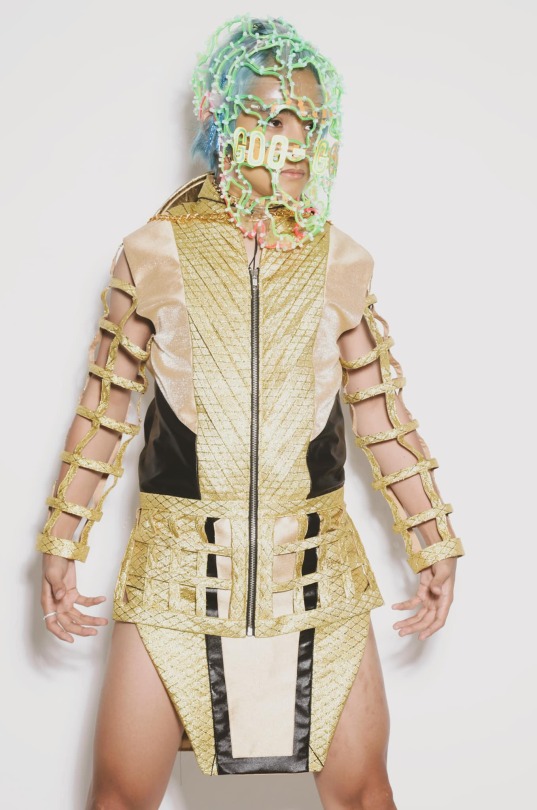

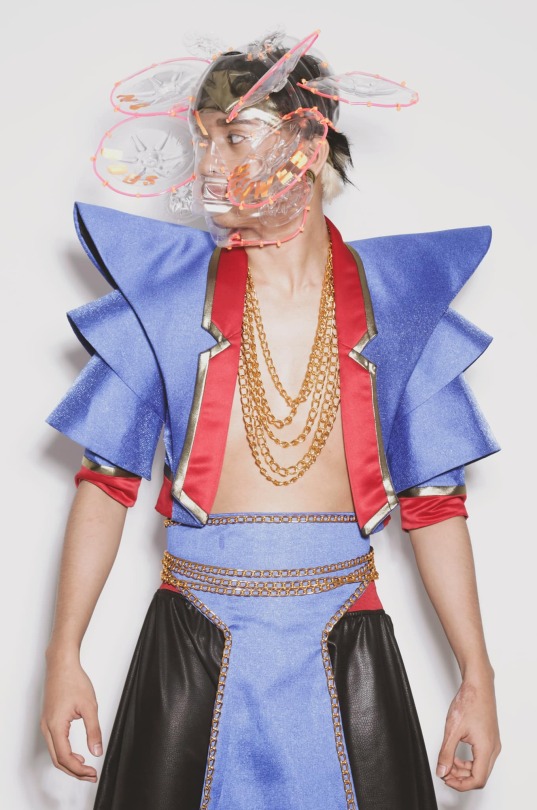
ALAMAT in their Mandirigma outfit by Victor Baguilat Jr. + head piece by Leeroy New
---------
For the MANDIRIGMA set of #Alamat's teaser photos, we partnered with Ifugao fashion designer Victor Baguilat Jr. of Kandama Collective to create futuristic/cyberpunk Philippine warrior-themed outfits.
Kandama is a social enterprise that aims to facilitate the empowerment of indigenous women through handloom weaving. It currently has weaving centers in Julongan village in Kiangan, Ifugao situated next to a UNESCO heritage site. Since its inception, Kandama has trained 29 weavers and, despite the pandemic, it currently has 14 active weavers.
Know more about Victor/Kandama here
---------
Caption from: Official Alamat Facebook Page
#Alamat#ppop#ppop rise#Indigenous Filipino fashion#cyberpunk fashion#fashion design#filipino music#filipino idols#filipino artists#Single: kasmala#Image#Teaser Image
37 notes
·
View notes